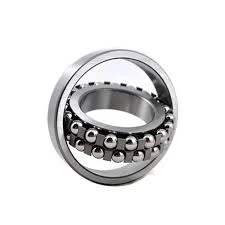
Nov . 25, 2024 02:13 Back to list
Understanding the Dimensions and Specifications of 6305 Bearing Types
Understanding the Size and Specifications of the 6305 Bearing
Bearings are essential components in a variety of mechanical systems, playing a crucial role in reducing friction between moving parts. The 6305 bearing is a popular type of deep groove ball bearing widely used across numerous applications due to its durability, versatility, and availability. In this article, we will delve into the size, specifications, and applications of the 6305 bearing.
Overview of the 6305 Bearing
The 6305 bearing falls under the category of deep groove ball bearings, which are known for their simple design and ability to accommodate both radial and axial loads. This makes them suitable for a wide range of situations, from high-speed applications to heavy-load environments. The 6305 number designates the bearing's series and size specifications according to the International Organization for Standardization (ISO) and the American Bearing Manufacturers Association (ABMA).
Size Specifications
The 6305 bearing has specific dimensions that are integral to its function. The key dimensions of the 6305 bearing are as follows
- Inner Diameter (ID) 25 mm - Outer Diameter (OD) 62 mm - Width (B) 17 mm
These dimensions are standard for the 6305 bearing, allowing it to fit specific applications and housings designed to accommodate these measurements. The internal construction of the bearing includes a set of metallic balls that roll between the inner and outer races, significantly reducing friction and wear.
Load Ratings and Performance
One of the crucial aspects to consider when looking at the size of a bearing is its load rating. The 6305 bearing is designed to handle a certain amount of radial and axial load, which is indicated by its dynamic and static load ratings.
- Dynamic Load Rating (C) Approximately 19,000 N - Static Load Rating (C0) Approximately 8,500 N
6305 bearing size

These ratings provide insight into the bearing's ability to perform under various load conditions. It is essential for engineers and technicians to select bearings based on these ratings to ensure longevity and optimal performance in their applications.
Material and Construction
The 6305 bearing is typically constructed from high-quality steel, which provides strength and resilience against wear. Some bearings may be made from stainless steel or other materials, depending on specific application requirements, such as resistance to corrosion. The surface finish and heat treatment also play a significant role in the lifespan and performance of the bearing.
Additionally, the 6305 bearing is often available with different sealing options, such as rubber seals (2RS) or shields (Z), which help to protect the inner components from dirt, moisture, and other contaminants, thereby extending the service life of the bearing.
Applications of the 6305 Bearing
Due to its versatile design and reliable performance, the 6305 bearing is used in a myriad of applications across various industries. Common uses include
- Electric motors Essential in reducing friction in rotating elements. - Automotive applications Found in wheel hubs, gearboxes, and other powertrain components. - Home appliances Such as washing machines and refrigerators, where smooth operation is paramount. - Industrial machinery Essential in conveyor systems, pumps, and fans.
The adaptability of the 6305 bearing makes it a favored choice in both original equipment manufacturing (OEM) and replacement parts markets.
Conclusion
Choosing the right bearing can significantly affect the performance and lifespan of machinery. The 6305 bearing, with its well-defined size specifications of 25 mm inner diameter, 62 mm outer diameter, and 17 mm width, along with its reliable load ratings, is an ideal component for many applications. Its combination of durability, versatility, and ease of maintenance makes it a cornerstone in both industrial and everyday applications. Understanding the specifications and applications of the 6305 bearing equips engineers and technicians with the knowledge to make informed decisions in their projects, ensuring optimal functionality and efficiency.
Latest news
-
Premium Deep Groove Ball Bearings | High Speed & Reliability
NewsAug.29,2025
-
Durable Scaffolding Clamps - Secure & Reliable Tube Connectors
NewsAug.28,2025
-
Common Failures in Thrust Ball Bearings and Solutions
NewsAug.22,2025
-
How Tapered Roller Bearings Can Take Shock Loads
NewsAug.22,2025
-
Angular Bearings in High-Precision Spindles
NewsAug.22,2025
-
The Impact of Misalignment on Cylindrical Roller Bearing Performance
NewsAug.22,2025
